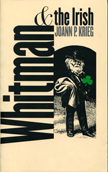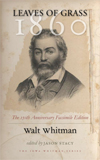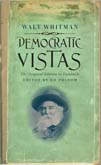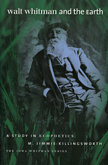Whitman and the Irish
“…attractively written, highly readable, skillfully crafted, and consistently Illuminating.”—M. Wynn Thomas, author of The Lunar Light of Whitman's Poetry
“A thoroughly researched, well-argued, and highly readable account of the poet's complex attitudes toward and interactions with Irish people and Irish American culture.”—M. Jimmie Killingsworth, Texas A&M University
“By focusing on Irish American history and Whitman’s remarkably frequent and close associations with Irish and Irish Americans, Krieg creates a suggestive and illuminating combination of cultural history and cultural biography—a slice of Whitman’s life seen through the lens of things Irish American, a slice of Irish American history seen through the lens of Whitman’s life. This book takes its place among the impressive recent books dealing with Whitman’s interactions with particular cultures and also among the recent studies that reassess the significance of the Irish assimilation into the United States.”—Ed Folsom, editor, Walt Whitman Quarterly Review
“This insightful study clarifies both of its major subjects. [Its] careful tracing of Whitman’s many links to the Irish in New York, Washington, and Boston augments our sense of the grounding of Whitman’s oeuvre in nineteenth-century American life. [Krieg’s] investigation of Whitman’s reputation in Ireland adds a fresh perspective to the problematic program to join nationality and literature begun by W. B. Yeats and other Irish Renaissance writers.”—Charles Fanning, author of Chicago Stories of James T. Farrell and The Irish Voice in America: 250 Years of Irish-American Fiction
Though Walt Whitman created no Irish characters in his early works of fiction, he did include the Irish as part of the democratic portrait of America that he drew in Leaves of Grass. He could hardly have done otherwise. In 1855, when the first edition of Leaves of Grass was published, the Irish made up one of the largest immigrant populations in New York City and, as such, maintained a cultural identity of their own. All of this “Irishness” swirled about Whitman as he trod the streets of his Mannahatta, ultimately becoming part of him and his poetry. As members of the working class, famous authors, or close friends, the Irish left their mark on Whitman the man and poet. In Whitman and the Irish, Joann Krieg convincingly establishes their importance within the larger framework of Whitman studies.
Focusing on geography rather than biography, Krieg traces Whitman's encounters with cities where the Irish formed a large portion of the population—New York City, Boston, Camden, and Dublin—or where, as in the case of Washington, D.C., he had exceptionally close Irish friends. She also provides a brief yet important historical summary of Ireland and its relationship with America.
Whitman and the Irish does more than examine Whitman's Irish friends and acquaintances: it adds a valuable dimension to our understanding of his personal world and explores a number of vital questions in social and cultural history. Krieg places Whitman in relation to the emerging labor culture of ante-bellum New York, reveals the relationship between Whitman's cultural nationalism and the Irish nationalism of the late nineteenth century, and reflects upon Whitman's involvement with the Union cause and that of Irish American soldiers.






